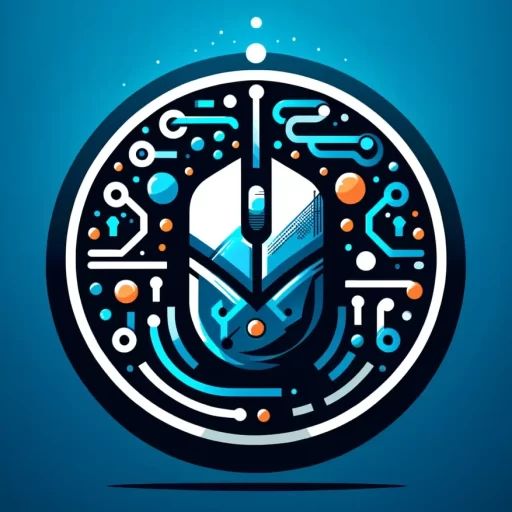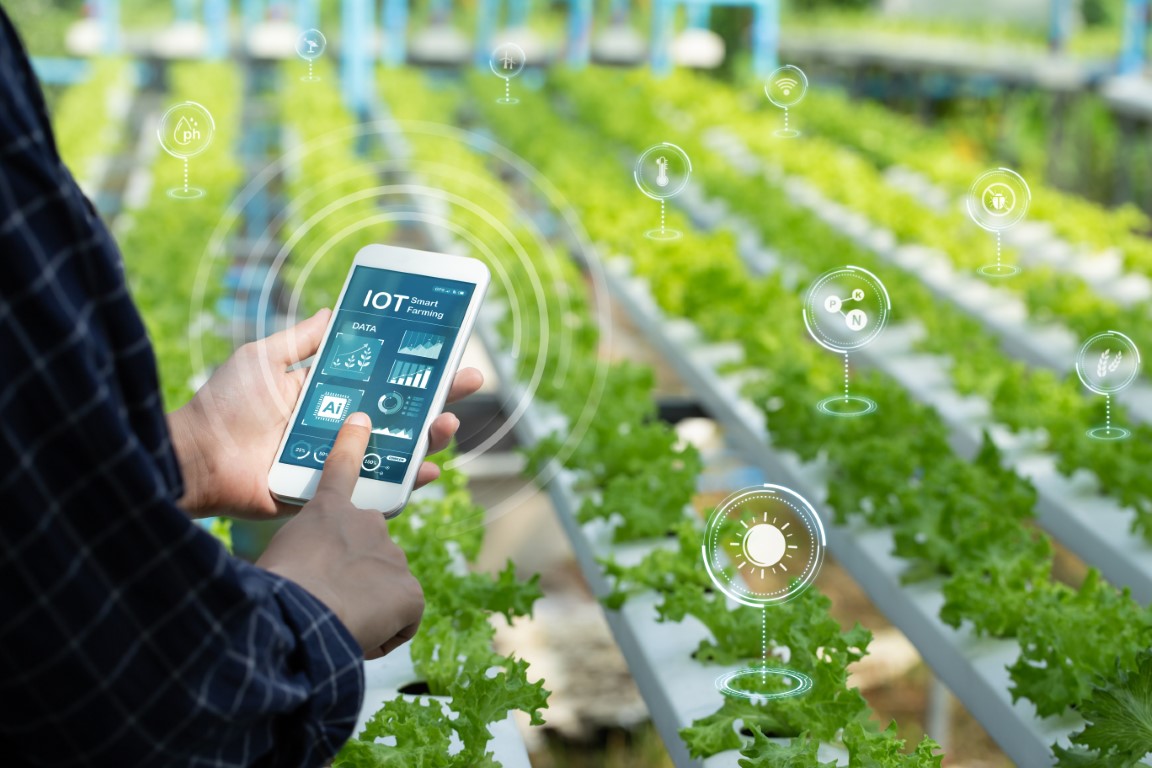In a world where connectivity is king, the Internet of Things (IoT) has emerged as a game-changer, revolutionizing various sectors. From smart homes that anticipate your needs to precision farming techniques that maximize crop yields, the landscape of technology is evolving rapidly.
But what about the latest innovations that are truly transforming the way we interact with our environment and each other? Stay ahead of the curve as we explore five cutting-edge IoT applications that are reshaping the future of technology and paving the way for unprecedented advancements in the digital realm.
Key Takeaways
- Smart home automation and industrial IoT revolutionize operations and enhance efficiency.
- IoT in healthcare and agriculture improves monitoring and decision-making processes.
- Data-driven city development optimizes resources and prioritizes citizen well-being.
- Wearable IoT devices and real-time data monitoring reshape consumer tech and traffic control systems.
Smart Home Automation Systems
Smart home automation systems have revolutionized how households operate, streamlining daily tasks and enhancing convenience. With the integration of voice control features, tasks like adjusting the thermostat, turning off lights, or even brewing a fresh pot of coffee can be accomplished effortlessly with just a simple command. This technological advancement not only adds a touch of luxury to your living space but also improves accessibility for individuals with mobility challenges.
Moreover, one of the most significant benefits of smart home automation is its impact on energy efficiency. By allowing you to remotely monitor and control your home’s energy consumption, these systems help reduce waste and lower utility bills. For instance, you can set schedules for heating and cooling systems to operate only when needed, or receive alerts about appliances left running unnecessarily. This level of control empowers you to make informed decisions that positively impact both the environment and your wallet.
Industrial IoT for Manufacturing
With the advancements in smart home automation systems revolutionizing household operations, the integration of Industrial IoT for Manufacturing is now reshaping how industries manage production processes and enhance efficiency.
In the realm of manufacturing, Industrial IoT is a game-changer, offering a myriad of benefits that streamline operations and drive productivity. One key advantage is predictive maintenance, where sensors and data analytics are leveraged to foresee equipment failures before they occur. This proactive approach minimizes downtime, reduces costly repairs, and ultimately boosts overall equipment effectiveness.
Quality control is another critical aspect where Industrial IoT shines. Real-time monitoring and analysis of production processes ensure that products meet stringent quality standards consistently. By identifying and rectifying issues promptly, manufacturers can uphold their reputation for delivering top-notch products.
The integration of Industrial IoT in manufacturing not only increases operational efficiency but also lays the foundation for a more agile and competitive industry landscape.
IoT in Healthcare and Telemedicine
The integration of IoT in healthcare and telemedicine has revolutionized the way medical services are delivered, improving patient outcomes and enhancing access to quality care. This innovative technology has paved the way for significant advancements in the healthcare industry, making it more efficient and effective than ever before.
- Remote Patient Monitoring: IoT devices allow for real-time monitoring of patients’ vital signs and health metrics from a distance, enabling healthcare providers to intervene promptly when necessary.
- Teleconsultation Platforms: Telemedicine services have become more accessible, allowing patients to consult with healthcare professionals remotely, saving time and reducing the burden on physical healthcare facilities.
- Smart Medical Devices: Healthcare IoT advancements have led to the development of smart devices that can automatically track and manage patient health data, promoting proactive and personalized care.
- Data Analytics for Predictive Healthcare: By leveraging IoT-generated data, healthcare providers can analyze trends, predict health outcomes, and tailor treatment plans to individual patients, ultimately improving overall healthcare quality and efficiency.
IoT in Agriculture: Precision Farming
In agriculture, precision farming utilizing IoT technology has revolutionized traditional farming methods. Through soil moisture monitoring, farmers can optimize water usage and prevent over-irrigation, enhancing crop health assessment.
Automated irrigation systems further streamline operations, ensuring crops receive the precise amount of water they need for optimal growth and yield.
Soil Moisture Monitoring
Amidst the technological revolution in agriculture, precision farming leverages IoT technology through soil moisture monitoring to optimize crop yield and resource efficiency.
Remote monitoring of soil moisture levels allows farmers to make data-driven decisions, ensuring crops receive the precise amount of water they need, leading to improved water conservation. By utilizing IoT sensors, real-time data on soil moisture content is accessible from anywhere, enabling timely adjustments to irrigation schedules. This proactive approach minimizes water wastage and reduces the risk of overwatering or underwatering crops.
Additionally, the integration of soil moisture monitoring with automated irrigation systems further enhances efficiency by delivering water precisely when and where it’s needed, promoting sustainable farming practices.
Crop Health Assessment
Amidst the advancements in precision farming, leveraging IoT technology for crop health assessment revolutionizes agricultural practices by providing real-time insights into plant conditions and improving decision-making processes.
By integrating plant disease detection and weather forecasting, farmers can identify issues at an early stage, allowing for targeted interventions and reducing crop losses.
The use of remote sensing technologies aids in monitoring crop health on a large scale, enabling farmers to optimize yields efficiently.
This real-time data collection and analysis empower farmers to make informed decisions promptly, leading to better overall crop management.
With crop health assessment through IoT, agriculture is transitioning towards a more proactive and sustainable approach, ensuring healthier plants and increased productivity.
Automated Irrigation Systems
Automated irrigation systems in precision farming represent a pivotal technological advancement that optimizes water usage and enhances crop growth through targeted and efficient watering techniques. These systems incorporate sensor technology to monitor soil moisture levels and weather conditions, enabling farmers to implement water conservation strategies effectively.
Climate change implications make these systems even more critical, as they allow for adaptive responses to shifting environmental conditions. Remote monitoring capabilities further enhance the efficiency of automated irrigation systems by enabling real-time adjustments based on data insights.
IoT in Smart Cities and Urban Planning
In the realm of Smart Cities and Urban Planning, the integration of IoT technologies is revolutionizing how urban areas function. Urban Infrastructure Connectivity enables seamless communication between systems, leading to enhanced efficiency and resource management.
Data-Driven City Development empowers municipalities to make informed decisions based on real-time data, fostering sustainable growth and improved quality of life for residents.
Urban Infrastructure Connectivity
The integration of IoT technology in urban infrastructure is revolutionizing the way smart cities are designed and planned, offering unprecedented connectivity and efficiency. Smart streetlights and traffic management systems are at the forefront of this transformation, enhancing safety and optimizing energy consumption.
Here’s how urban infrastructure connectivity is shaping the cities of tomorrow:
- Real-Time Data Monitoring: IoT sensors embedded in streetlights and roads collect data on traffic flow, pedestrian movement, and environmental conditions.
- Predictive Maintenance: Smart infrastructure can predict maintenance needs, reducing downtime and increasing the lifespan of city assets.
- Dynamic Traffic Control: Traffic signals can adjust in real-time based on traffic volumes, easing congestion and improving commute times.
- Energy Conservation: Smart streetlights automatically adjust brightness levels based on natural light, saving energy and reducing light pollution.
Data-Driven City Development
Transforming urban landscapes through the integration of data-driven insights from IoT technology is revolutionizing the way smart cities are developed and planned.
Data-driven urban planning is enabling cities to optimize resource allocation, enhance public services, and improve overall quality of life for residents. By harnessing real-time data on traffic patterns, energy consumption, waste management, and more, city planners can make informed decisions that promote sustainable development and efficient utilization of resources.
The implementation of IoT in smart cities isn’t just about technological advancement; it’s about creating more livable, environmentally friendly urban spaces that prioritize the well-being of citizens. Through data-driven approaches, cities can address challenges proactively, adapt to changing needs, and build resilient communities for the future.
IoT in Transportation and Logistics
With the rapid advancements in IoT technology, the integration of smart sensors and real-time data analytics has revolutionized the efficiency and safety of transportation and logistics operations. This transformation is evident in various ways:
- Vehicle Tracking: IoT enables precise real-time tracking of vehicles, enhancing fleet management and allowing for better resource allocation.
- Route Optimization: By analyzing data from sensors and traffic patterns, IoT can suggest optimal routes, reducing fuel consumption and delivery times.
- Supply Chain Visibility: IoT provides end-to-end visibility in the supply chain, offering insights into inventory levels, shipment statuses, and potential disruptions.
- Warehouse Automation: Through IoT-connected devices, warehouses can automate inventory management, improve picking processes, and enhance overall operational efficiency.
The seamless integration of IoT into transportation and logistics not only streamlines processes but also enhances customer satisfaction through timely deliveries and cost-effective operations. As technology continues to evolve, the potential for further innovations in this sector is vast, promising even greater efficiency and reliability in the future.
Wearable IoT Devices in Consumer Tech
Revolutionizing the realm of consumer technology, wearable IoT devices are reshaping how individuals interact with and benefit from interconnected devices in their daily lives. These devices have seamlessly integrated into our lifestyles, providing a new level of convenience and insight. One of the key areas where wearable IoT devices excel is in fitness tracking. By constantly monitoring your activity levels, heart rate, and sleep patterns, these devices offer a comprehensive overview of your health and fitness progress. This real-time data empowers you to make informed decisions about your lifestyle and exercise routines.
Moreover, wearable IoT devices play a crucial role in health monitoring. They can track vital signs, detect irregularities, and even alert you and healthcare providers in case of emergencies. This continuous monitoring not only promotes proactive healthcare but also allows for early intervention in potential health issues. As these devices become more advanced and accurate, they’re becoming indispensable tools for individuals looking to take control of their well-being.
Frequently Asked Questions
How Do Iot Applications Impact Environmental Sustainability in Smart Cities and Urban Planning?
In smart cities and urban planning, IoT applications play a crucial role in enhancing environmental sustainability. They enable real-time data collection, optimize resource usage, and streamline operations, leading to more efficient infrastructure and reduced environmental impact.
What Are the Potential Cybersecurity Risks Associated With Wearable Iot Devices in Consumer Tech?
When using wearable IoT devices in consumer tech, potential cybersecurity risks include data breaches due to insufficient data encryption and weak authentication methods. It’s crucial to prioritize robust security measures to safeguard personal information effectively.
How Does Iot Technology Improve Efficiency and Safety in Transportation and Logistics?
In transportation and logistics, IoT technology enhances visibility by providing real-time tracking of assets. It improves communication through data exchange between vehicles and centralized systems, enabling better route planning and resource allocation, ultimately boosting efficiency and safety.
What Are the Privacy Concerns Surrounding the Use of Iot in Healthcare and Telemedicine?
When it comes to IoT in healthcare and telemedicine, data security is paramount. The ethical implications of handling sensitive patient information raise concerns about privacy breaches. Safeguarding this data is crucial for trust and compliance.
How Do Iot Applications in Agriculture Address the Challenges of Food Security and Resource Management?
In agriculture, IoT applications revolutionize resource management by enhancing water efficiency through smart irrigation systems. Real-time crop monitoring boosts yields and minimizes waste. These innovations address food security challenges by optimizing production and sustainability practices.
Conclusion
In conclusion, the rapid advancement of IoT technology has led to the development of innovative applications that are revolutionizing various industries. From smart home automation to precision farming in agriculture, IoT is reshaping the way we live and work.
As we continue to embrace these new technologies, it’s clear that the possibilities are endless and the potential for growth and efficiency is immense. The future of IoT is bright, and it will continue to transform the way we interact with technology.

